

Portland, Oregon
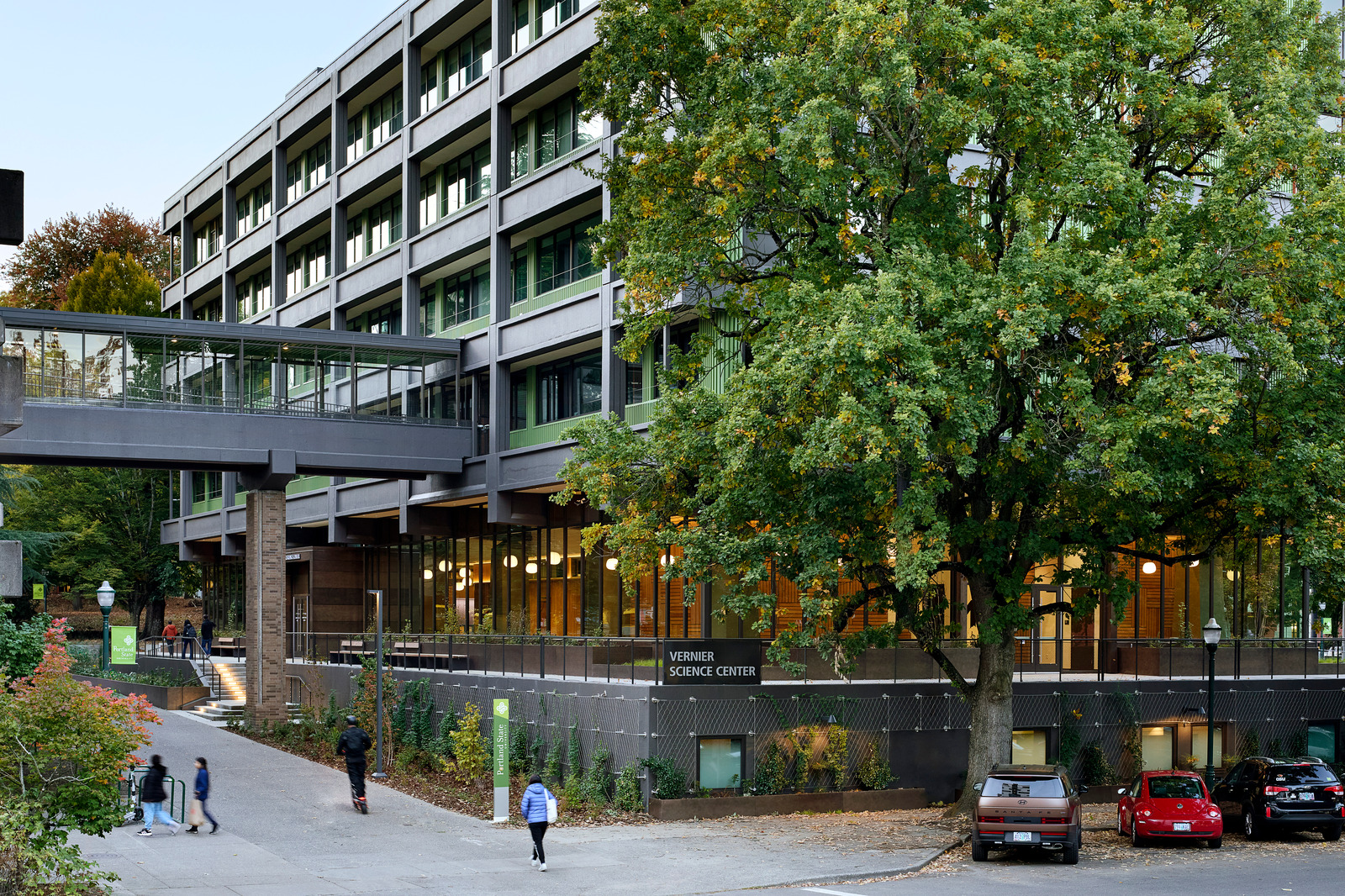
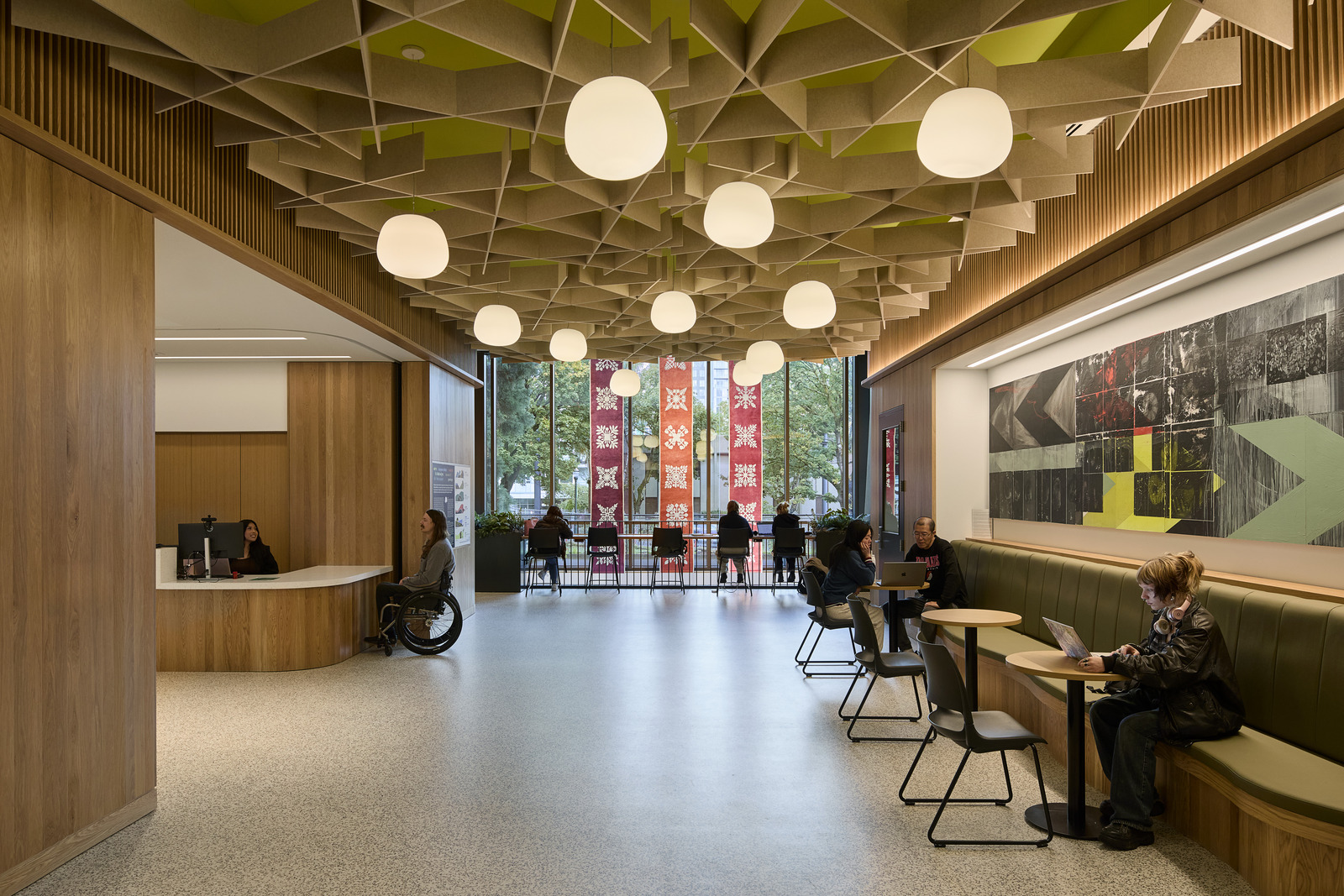
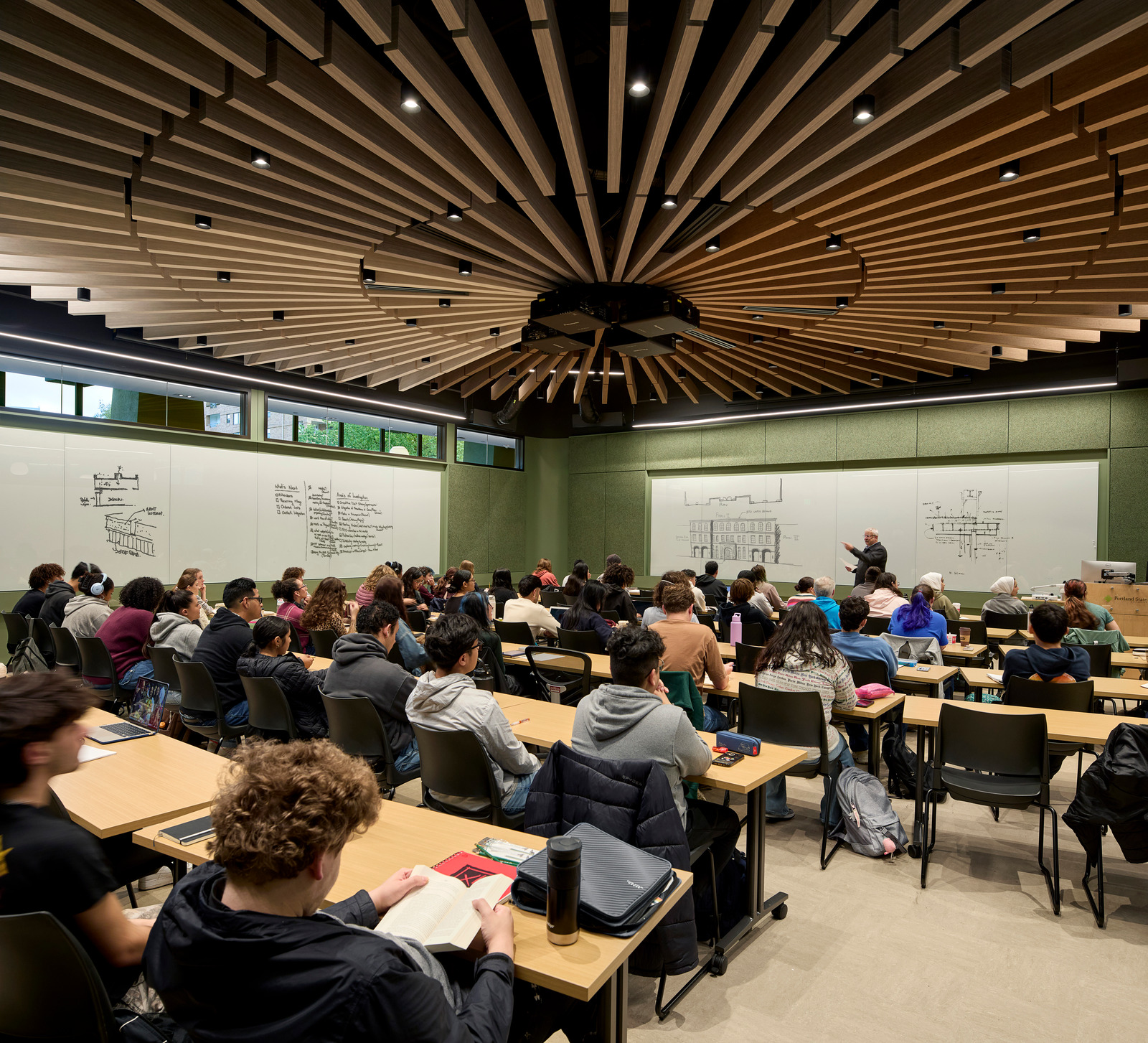
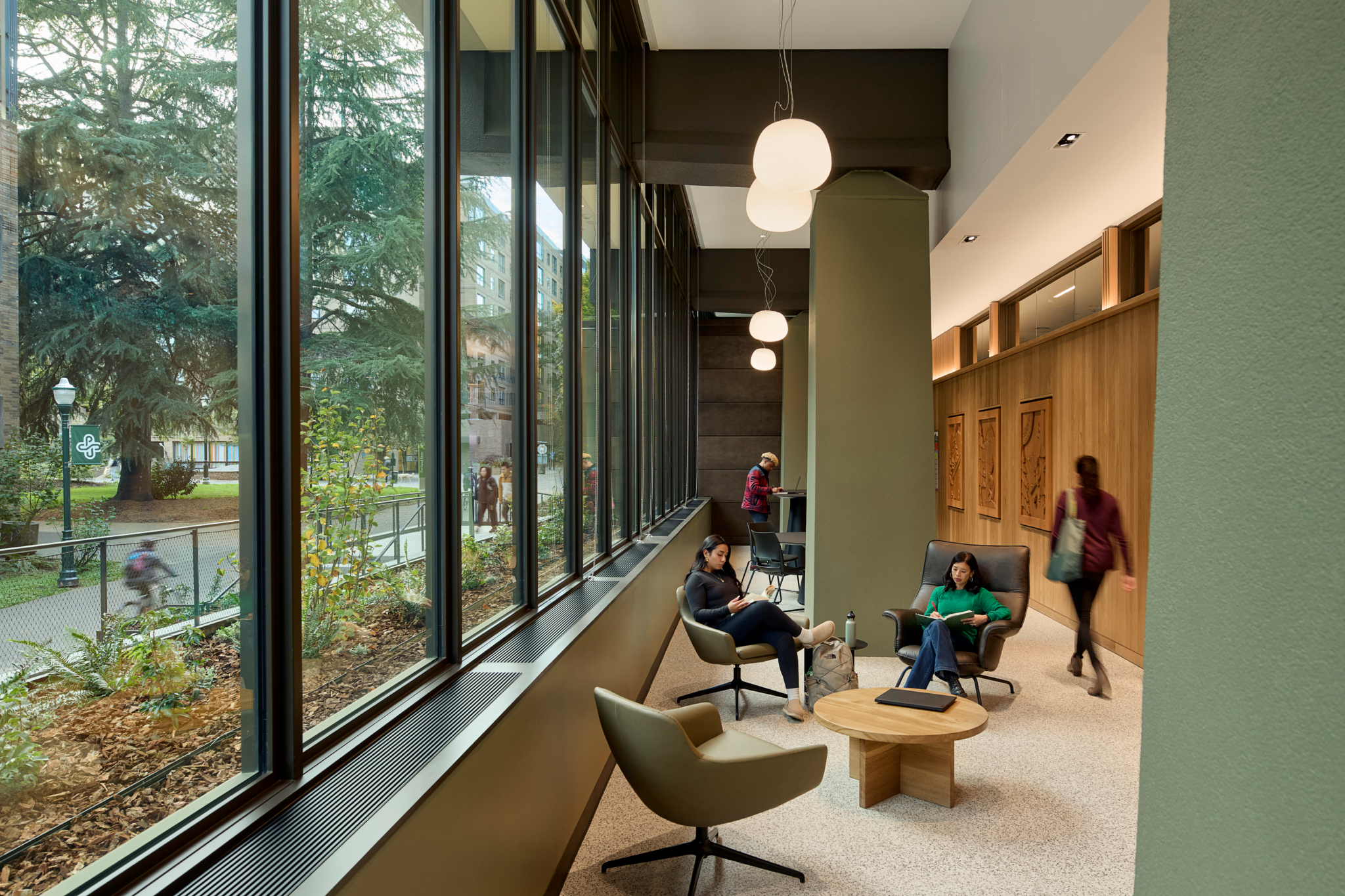
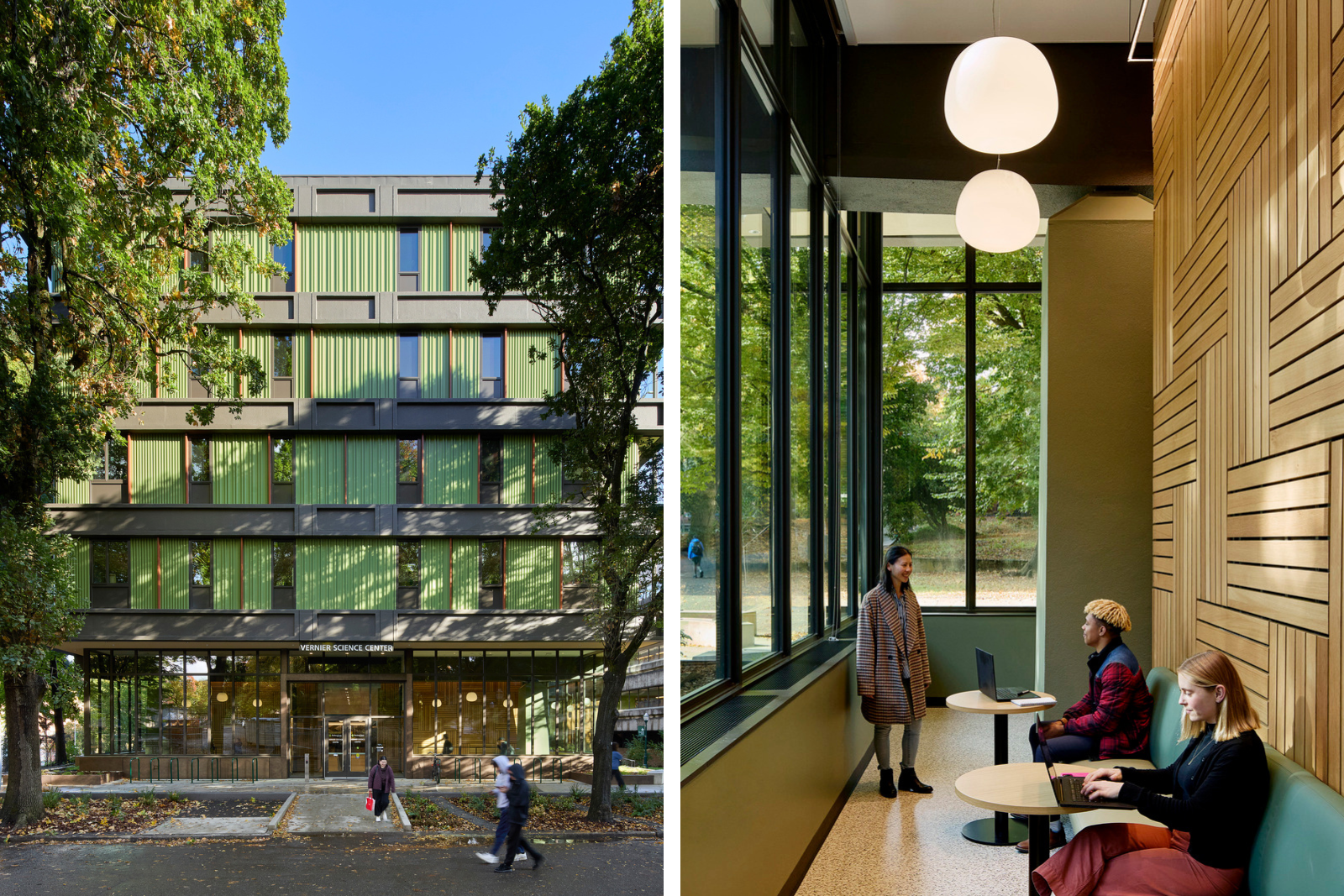
Portland, Oregon
We built an entire building based on stories of people. I think that’s a pretty radical transformation for most science.
The renovation of the outdated Science Building One, built in 1967, creates an undergraduate science hub on campus, transforming the Brutalist structure into an inclusive, welcoming center for all students. The transformed 6–story Vernier Science Center pushes the original building skin out by eight feet all around the main floor level. Wrapped in glass, the entry level connects greenery and the natural world to the science research within while maximizing daylight in common and circulation areas. Sitting at the heart of the PSU campus in downtown Portland, the new science center will be shrouded in climbing vines, offering a softer street presence on 10th Avenue. The human-scaled entry is surrounded by oversized tree planters signaling an accessible, community-minded destination that supports practical and applied learning for students from every background.
Our design process leveraged a Critical Race spatial lens to address historic inequalities in science education, engaging BIPOC and Indigenous students in dialogue that directly influenced our decisions. In considering programming, open and informal learning areas, imagery, artwork, and lighting, we sought a design that would represent and celebrate all students’ needs, experiences and cultural traditions. Carefully curated spaces such as a community gathering room, a decolonized library, and a food/plant teaching kitchen push beyond typical Westernized lab offerings to allow Indigenous communities to gather and explore science in ways more meaningful and familiar to them. A theme of science on display throughout the building also allows students to showcase their work, contributing to a vibrant, collaborative environment that motivates Oregon’s future scientists to excel in their field.
Climate
Reuse of the existing building minimizes embodied carbon. Replacing existing single-paned windows and upgrading the mechanical systems will dramatically improve energy efficiency.
Health
The renovation will increase access to natural light, views, and access to the outdoors to imbue a connection to place–qualities that are uncommon in laboratory buildings. Student exposure to harmful chemicals through lab uses will be reduced by separating research, instruction labs, and other student support functions. Food will be celebrated as a part of the scientific process, rather than separate from it.
Equity
Our architectural approach is to create a learning environment that represents and reflects the needs of historically underrepresented cultures. The project’s central idea is to support and provide access for all students to feel welcome and achieve success in the sciences. Strategies to achieve this include a new accessible entrance, the balancing of transparency and privacy, and the selection of material finishes that reflect the local ecosystem and indigenous culture.
Collaborators
Studio Petretti Architecture
PLACE
Catena Consulting Engineers